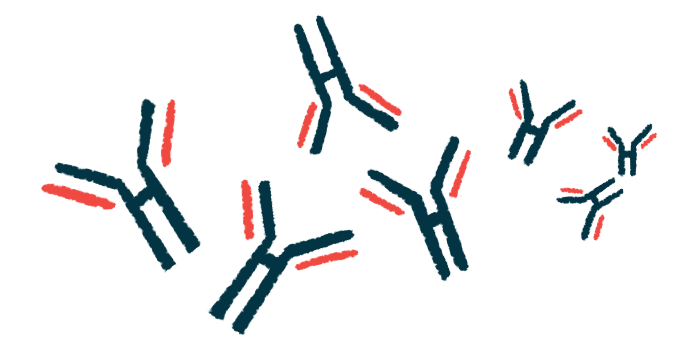Self-directed immune attack cause of woman’s AADC deficiency
Initial issue was orthostatic hypotension, which doctors treated with vitamin B

A 62-year-old woman was found to have acquired aromatic L-amino acid decarboxylase (AADC) deficiency due to a self-directed autoimmune attack, a case study reported.
She also had severe orthostatic hypotension, or a drop in blood pressure when standing up, which was successfully treated with vitamin B6 supplements, a first-line treatment for AADC deficiency.
“We identified a novel and extraordinary etiology [cause] of [orthostatic hypotension],” the scientists wrote in the study, “A Novel Mechanism of Idiopathic Orthostatic Hypotension and Hypocatecholaminemia Due to Autoimmunity against Aromatic L-Amino Acid Decarboxylase,” published in the journal Biochemical and Biophysical Research Communications.
AADC deficiency most often is a genetic condition, identified in infancy
AADC is an enzyme that generates neurotransmitters, the chemical messengers that nerve cells use to communicate and which include serotonin, dopamine, and dopamine-derived norepinephrine and epinephrine.
A rare condition, AADC deficiency typically is caused by mutations in the DDC gene, which provides instructions for the AADC enzyme. An inherited lack of this enzyme leads to low levels of neurotransmitters and the onset of developmental delays, and to movement and behavior problems, with symptoms usually emerging in the first year of life.
Both dopamine and serotonin play essential roles in the normal functioning of the autonomic nervous system. This branch of the nervous system controls involuntary bodily functions, such as breathing, heart rate, blood pressure, digestion, and sexual arousal.
One manifestation of autonomic dysfunction is orthostatic hypotension, when blood pressure markedly drops when standing up from a seated or lying position. Symptoms include dizziness, nausea, sweating, a sense of warmth, or blurred vision. A severe drop in blood pressure can lead to fainting, or syncope.
Researchers in Japan described the case of a 62-year-old woman who experienced severe orthostatic hypotension with syncope due to an unusual cause: a self-directed immune response against AADC resulting in an acquired enzyme deficiency.
One month before visiting the hospital, she experienced vertigo, a sensation of motion or spinning, which rapidly worsened with the onset of a fever that lasted for several days.
At the hospital, she was unable to stand without assistance and fainted while sitting up. Her blood pressure was normal when lying down but dropped when sitting.
Nerve function associated with senses and movement was normal, as were MRI scans of the head and chest, and CT scans of the abdomen.
Lab tests, however, showed “extremely” low levels of monoamines and their metabolites, the class of chemicals that includes serotonin and dopamine, in her urine, blood, and cerebrospinal fluid (CSF), which surrounds the brain and spinal cord. In contrast, the level of L-dopa, dopamine’s precursor, was markedly high in her blood and CSF. Accordingly, blood tests showed no signs of AADC enzyme activity.
Condition traced to an autoimmune attack against AADC-expressing cells
At age 40, she was diagnosed and treated for Hashimoto’s thyroiditis, an autoimmune disease caused by self-directed antibodies, or autoantibodies, targeting cells in the thyroid gland. However, tests for several common autoantibodies were negative.
Scientists then detected autoantibodies against AADC activity in her bloodstream. Still, these antibodies did not affect the AADC enzyme in normal blood, suggesting that “the lack of AADC enzyme activity in the patient was caused by cellular toxicity against AADC-expressing cells,” the team wrote.
To determine whether cell-mediated immune toxicity caused the AADC deficiency, immune cells isolated from the woman were exposed to a lab-made version of the AADC enzyme. The subsequent release of high levels of interferon-gamma, a pro-inflammatory immune signaling protein, was consistent with the activation of cytotoxic immune T-cells against AADC-producing cells. Lastly, the anti-AADC autoantibodies she had were those generally induced by T-cell-mediated immune toxicity.
Treatment with midodrine, a medication for orthostatic hypotension, had no effect. Instead, 60 mg of daily vitamin B6 markedly improved results of biochemical lab tests and the woman’s ability to stand upright for more than 30 minutes without symptoms.
“Our findings provide new insights into the pathogenesis of autoimmune autonomic dysfunction” and suggest that “the disease in this study is a novel [orthostatic hypotension] syndrome,” the scientists concluded. “Further studies are needed to elucidate the etiological mechanisms of this syndrome.”






